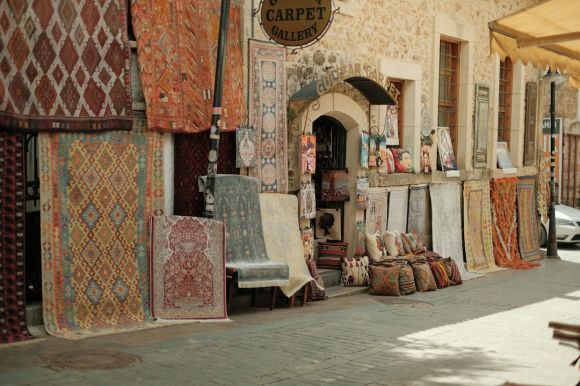The rich cultural heritage of Turkey encompasses various art forms, and one of the most renowned is the art of traditional Turkish carpet weaving. For centuries, Turkish carpets have been admired and sought after for their exquisite designs and superior craftsmanship. Each carpet is a masterpiece, intricately woven with dedication and skill. In this article, we will delve into the fascinating world of Turkish carpet weaving, exploring its history, techniques, and the cultural significance it holds.
A Historical Tapestry
Turkish carpet weaving has a long and storied history, dating back thousands of years. The art form flourished during the reign of the Seljuk and Ottoman empires, reaching its zenith in the 16th and 17th centuries. Carpets were not only utilitarian items but also symbols of status and wealth, often used to adorn palaces, mosques, and the homes of the elite.
The Techniques Behind the Beauty
The process of creating a Turkish carpet is a laborious one, requiring patience, precision, and a keen artistic eye. The first step is the selection of high-quality wool or silk, which forms the foundation of the carpet. Skilled artisans then dye the yarn using natural colors derived from plants and minerals, ensuring the authenticity and longevity of the colors.
Next, the weaving process begins, using either a vertical or horizontal loom. The weaver meticulously ties each knot by hand, following intricate patterns and designs. The two most common types of knot used in Turkish carpet weaving are the Gordes and the Senneh knot. The Gordes knot is symmetrical and results in a denser carpet, while the Senneh knot is asymmetrical and produces a finer, more delicate weave.
The patterns and motifs found in Turkish carpets are steeped in symbolism and cultural significance. Geometric designs, floral motifs, and animal figures are commonly featured, each carrying its own meaning. For instance, the Tree of Life symbolizes fertility and abundance, while the Dragon symbolizes protection and power.
Preserving a Cultural Legacy
Turkish carpet weaving has not only survived the test of time but has also evolved and adapted to modern sensibilities. Today, traditional carpet weaving techniques are combined with contemporary designs, creating a fusion of old and new. Many artisans are dedicated to preserving the heritage of this art form, passing down the skills and knowledge to future generations.
Learning the Art
If you are captivated by the beauty of Turkish carpets and wish to learn the art of carpet weaving yourself, there are several options available. Many cities in Turkey offer workshops and classes where you can learn the techniques from experienced weavers. These hands-on experiences provide a unique opportunity to immerse yourself in the world of carpet weaving, gaining a deeper understanding of the art form.
Additionally, there are online resources and instructional videos that can guide you through the process of carpet weaving. While it may be challenging to replicate the level of skill and expertise possessed by master weavers, learning the basics can be a rewarding and fulfilling experience.
Beyond the Craft
Turkish carpet weaving is not just a craft; it is a reflection of the rich cultural heritage of Turkey. Each carpet tells a story, representing the history, traditions, and creativity of its makers. By learning the art of Turkish carpet weaving, you not only acquire a valuable skill but also become a custodian of a cultural legacy.
Conclusion: Weaving the Threads of History
Turkish carpet weaving is an art form that has stood the test of time, captivating people with its beauty and craftsmanship. From the historical tapestry to the techniques behind the art, every aspect of Turkish carpet weaving is steeped in tradition and cultural significance. By learning this art form, you become a part of a legacy that spans centuries, preserving and promoting the rich cultural heritage of Turkey. So, immerse yourself in the world of Turkish carpet weaving and let the threads of history guide your creative journey.





